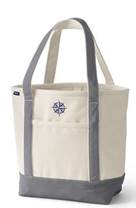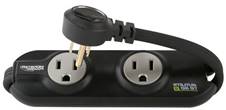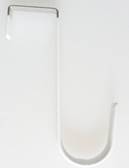
Why Should I Use a Travel Advisor?
You have several options when it comes to booking a cruise: You can do it yourself online, directly through the cruise line or use a travel advisor who has booked thousands of cruises.
There are a wide range of fares based on the experience, the length, the cruise line, the type stateroom, the category (see What’s a Stateroom Category? for more on this confusing topic), and date of sailing. The “price” is comprised of several different components and can be misleading is not fully understood. First, there is the “fare”, then the “port charges” and, of course, the taxes and fees. These, all added together, make up the total cost to get you onboard.
When you see an advertisement that says “fares starting at….” this fare normally does not include the fees and taxes AND more importantly may be a restricted fare (i.e. non refundable deposit) or a stateroom you really aren’t interested in (think bunk beds). Fares are based on double occupancy, but some staterooms will accommodate more than two people, or you can sail solo. Staterooms that are on a lower deck, forward and aft are less expensive than mid ship upper level decks. Some staterooms are described as “obstructed view” which means while there is a window or a balcony there is also something in the way. There are connecting staterooms, adjoining staterooms, family staterooms, private area staterooms and more. Payments are made in stages and usually there is an option date, deposit date, final payment date and penalty date which is based on the booking date.
Cruise line pricing is confusing. This is where the Travel Advisor comes in. There is no added cost to you to use an advisor and they can wrangle their way through the details to find you the best fare to match your needs.
And -
The Advisor has access to all the advertised fare promotions and programs.
The Advisor handles all aspects of your trip’s administrative needs saving you time.
The Advisor has likely been where you are going and has ideas, suggestions and answers to your questions.
Why a Cruise?
- Value - One price buys your accommodation, dining, entertainment and transportation.
- Variety - So many ships, so many ports.
- Activities - Sightseeing, sports activities, lectures, or simply relax by the pool or on deck.
- Simplicity - Cruises are hassle free, do what you want when you want.
- New Horizons - Fall asleep in one destination and awake in another.
- Families - Families love cruising. Structured children’s activities for them; time alone for you.
- Cuisine - So many options from the very fancy to grab a slice of pizza and go.
- Romance - Weddings on board, honeymoons, special anniversaries.
- Pampering - Regardless of your budget you will be taken care of by an attentive crew.
Will I Get Sick on a Cruise?
Do I Need a Passport or a Visa?
The short answer here is YES. Since most cruises visit the ports of many countries, proof of United States citizenship is required to not only allow you to visit these countries, but allow you to reenter the United States. While a passport may not be required, it is advisable. While you can cruise the Caribbean without a passport you cannot return to the US via airplane. Should something unforeseen happen a passport makes it much easier to get home.
Make a 2 photocopies of the front page of your passport and store one away from the original as a precaution should yours be lost or stolen. Then use the second copy when you head into port. You can lock your passport in your cabin safe and keep the copy with you. You’ll have identification without risking your passport being stolen or lost while in port.
Another smart idea is to take a scan of your passport and email it to yourself. This way no matter where you go, you will have a digital copy that you can access from anywhere with Internet.You can read all the current passport regulations at https://travel.state.gov/passport.
Photos and applications for passports are available at AAA.
If you are not a U.S. citizen, please be sure to bring the correct documentation for all the countries you will be visiting.
For those countries requiring visas, your cruise line may or may not notify you. It is your responsibility to ensure you understand EXACTLY what is required.
Do I Need Trip Protection Insurance?
I strongly recommend trip insurance to protect your investment and provide peace of mind, since cruise line penalties for cancellation apply as your trip date approaches. Trip protection coverage also can provide medical coverages and transportation home in the case of an accident. This coverage could save you thousands of dollars in the event of an unfortunate accident. Coverage is offered by the cruise line or can be purchased from an independent source. One advantage of an independent source is the coverage can be customized if you have special requirements and usually is more comprehensive than what is offered by the cruise line. Make certain you clearly understand what is covered.
Need More Cruising Information?
What’s on the Cruise Line Website?
What if I need to fly to or from the cruise port?
What isn’t Included in my Cruise Fare?
What’s a Stateroom Category?
For a single sailing there can be hundreds of fares that change frequently. Fares are based on the category of the stateroom, number of occupants and deck position. Cruise ship staterooms are not like hotel rooms and have an occupancy restriction. Cabins are designated for 2, 3, 4 and sometimes 5 passengers.
Staterooms on most cruise lines are functional and designed for efficiency. There are a wide range of stateroom types available on today’s ships. The basic categories are:
Ocean View or Outside Stateroom with a porthole or picture window, depending on your ship’s design.
Interior or Inside Stateroom with no window or porthole expect sometimes there is a porthole.
Balcony or Verandah Stateroom where you will be able to enjoy your own private outside area.
Suites which are larger and more luxurious and generally have a balcony. Some suites come with special services such as priority boarding, private dining rooms and butlers.
Studios which are on a few ships, are staterooms expressly designed for the single traveler.
Staterooms are priced according to type and location on the ship. Some cruise lines offer what is called a “guarantee”. You choose the type and they choose the location. If location is not important to you this can be a lower priced option. However, you could end up below or above the disco dance floor; not a problem if you dance the night away but if you turn in early you should consider what is on the deck above and below.
Your stateroom choice should be based on the duration of the cruise, the destination and your own personal preference. If you choose an interior stateroom, almost always the best price, it will be dark as a cave all day and all night. A fellow travel taught me a trick. When you go to bed at night tune your TV to one of the channels with a deck camera and mute the sound. When it is daylight your TV screen will turn from dark to light – like a faux window.
Your stateroom will be attended to by a steward who is there to make your stay comfortable, whether to change the bed configuration to your desires, or to bring you extra towels, pillows, or blankets if needed. Most ships also have safes in your room, and TVs that play current movies, give you casino instructions, general cruise information, deck cameras, music, navigational information and more.
It’s my first cruise is there a “things to do list”?
- Purchase trip protection coverage. Really. It’s not only about not being able to go it’s about having an accident during the trip. It can cost tens of thousands of dollars if you have an accident and require care or need to get home. Kate has several “horror” stories she will share if you need more convincing.
- Check with your Travel Advisor, cruise line or government agency to understand requirements for, passports, visas, proof of citizenship and government issued IDs. Make sure everything is valid for at least 6 months after your return. Do not wait until the last minute to renew documents as it may be too late and or will become costly to get them in time. If you do not have the correct identification the cruise lines will not let you board and will not refund your money.
- Advise your Travel Advisor of any medical conditions that they should be aware of such as dietary restrictions or the need for a sharps container.
- Review all documentation for accuracy - the correct ship and sailing date; the correct cabin category and cabin number; the correct itinerary and the like. Double check to make sure your names are shown as they appear on your passport. Notify your travel advisor with any corrections.
- Complete, usually on-line at the cruise line’s website, any forms that cruise line requires such as the pre-registration for the cruise. This is also a good time to join the frequent traveler program offered for future perks. You can also plan shore excursions, spa services and specialty dining. Cruise lines also have online stores where you can purchase items to be waiting for you in your stateroom such as liquor, wine, bottled water, flowers, and more.
- Make a note on your calendar for the final payment date – usually 60 to 90 days before sailing.
- Prepare an essential packing list and a packing list for each person traveling. Begin to plan your wardrobe. Try things on to make sure they fit and are in good repair. Set things aside in your closet. If you need to shop, start now so you have time to find just the right things.
- See your physician for any medical requirements and/or prescriptions for additional medication to cover you until you return from your cruise. Create a summary your medical history and current drugs and pack it; make sure your travel companion knows where to find it.
- Notify your credit card company(s) that you are traveling out of your normal area. Learn which cards are accepted where and if there is a foreign exchange fee charged.
- Make two photocopies of your passport, ID and credit cards. Leave one copy with a relative or friend and carry the other separately from the originals.
- Obtain a supply of small US dollars bills for tipping. You can use your ATM card at your destinations should you need foreign currency for tipping.
- Leave a copy of your full itinerary with a relative or friend, which should include, the cruise line, the name of your ship and your stateroom number and information on how to reach the ship.
- Put a card with your name, address, and itinerary inside each suitcase in case your luggage gets lost.
- Fill out your luggage tags and follow the instructions in your cruise documents regarding attaching them.
- Check, check double check your passport, other IDs and credit cards are with you.
What Items Should I Pack?
Your passport, casual shorts outfits, a floppy hat, a bathing suit and cover up, a tote bag, evening attire, comfortable walking shoes, sunglasses, sun-screen, a camera, bug repellent, a collapsible shopping bag, a rain poncho or small umbrella and reading material are all things to consider.
I suggest you also travel with a copy of your medical history, your prescription drug list and you eyeglass prescription.
Some cruises have theme parties such as white night or toga night and you may want to check to be sure you bring appropriate attire to participate in special activities.
Going to Hawaii and renting a car? Gas in Hawaii is ridiculously expensive; take your Costco card if you have one and save many cents per gallon.
What are the items NOT to Bring?
Cruise lines have restrictions on what beverages, adult and otherwise, you can bring on board. You should familiarize yourself with these policies as items that do not comply will be confiscated. For example, currently Carnival Cruise Lines does not allow bottled water and limits each adult to 1-750ml bottle of wine or champagne. No liquor may be brought aboard at embarkation or from a port. Liquor purchased in port will be collected and returned the morning of debarkation. All allowed beverages MUST be packed in your carry-on luggage. You should check out what can be purchased prior to sailing such as water, liquor and soda packages. If you do choose to carry on wine be aware a corking charge could apply.
Candles are not allowed nor are any other heating devices such as a mug warmer, iron or other open flame items. Fire is the biggest safety concern at sea and any item, even remotely incendiary, will be confiscated.
Do not bring any item restricted by TSA regulations.
Some islands do NOT allow camouflage clothing so best idea – leave it at home – you’re cruising not hunting anyway.
And please do check the cruise lines website for other specifics.
What Else Should I Bring?
First of all do not over pack. Staterooms are spacious but not immense and hauling stuff around you don’t need is just a plain hassle. Unless you are going to some exotic remote destination chances are if you can’t live without it and you don’t have it you can buy it. I suggest you start a packing list that you use each and every time you travel. Scratch off the stuff you don’t use; add the stuff you do; that said, here’s a list of things I have found handy to have over the years.
|
A small cooler (depending on the cruise line’s policy) - I ask my stateroom steward at the beginning of the cruise to keep it filled with ice and give him a tip to do so. That way, whenever I want ice it is there. The provided ice buckets don’t hold the ice all day and when I want ice, I want ice! This is the one I have. It’s a Rubbermaid 10-Quart and they are usually found at Home Depot or always at Amazon.com |
|
A clear over the door shoe bag – You can buy these at Bed Bath and Beyond or similar spots and they are great to hang over a closet door to organize your makeup, toiletries or whatever in. Generally, the bathrooms are small with minimal storage space so this makes it easy to find what you want. Make sure the hooks will not scratch the door. |
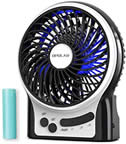 |
A small, portable, battery/USB cabin fan. Bringing along a fan for the cabin is a great idea. It can help to have some air circulating in the room, especially for sleeping at night. No matter which sort of fan you bring, you want something that is compact to pack. |
|
A tote bag – this is pretty much essential in my book. On board there’s a myriad of uses for it – spa, gym, reading material. On land – beach towels, a change of clothes, shopping. In my book it is a must have. The one pictured is from Land’s End and it is my go-to bag. |
|
Most lines will give you a credit card like card that is used as your stateroom key and on-board credit card. A lanyard is not most stylish accessory but if you are into convenience it can’t be beat. And once you’ve lost your card or locked yourself out of your stateroom you realize style is less important. If it’s always around your neck you always know where it is. |
|
Power strip – Your stateroom is going to have one, maybe two power outlets. Camera, Phone, Laptop, Tablet…. You get the picture. BUT you must have one that is new and in good condition. Fire is the number one safety concern on any ship and if they believe your strip is a hazard it will be confiscated. Monster Outlets to Go, Amazon.com and Anker, makes a great heavy duty compact travel strip. |
|
A sweat mop and OK - gross but….the islands are hot and when you have sweat dripping down your face and sunscreen in your eyes you will thank me. |
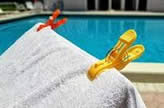 |
Towel clips can be very handy on a windy deck.You never really think about how breezy it gets on a cruise. With the ship in motion, there is a constant wind on the decks. That makes trying to keep your towel from flying away an exercise in frustration. Luckily for just a few bucks you can get some towel clips that will keep your towel on your on your lounger chair. |
 |
Slip-resistant flip flops. You need to pack a pair of flip-flops that have tread and and are made of a non-skid material. Those cheap flip-flops can have a sole that’s smooth and quite slippery in wet conditions. With wet decks on the ship, it can be like walking on ice when you have no tread around the pool areas. |
|
Bring ones and fives with you for tips so you don’t have to waste time trying to break big bills. You will want tips for luggage porters, room service, drivers, tour guides and entertainers such as the Piano Bar. |
|
Over the door hooks. Another must have for me and make sure they will not scratch the door. They give you just a bit more space to hang things like your tote, your lanyards so you are not constantly looking for your card, your hat – you get the idea. This is the kind I use as they are compact for packing and will nest in one another. They can be found sometimes at Publix or Amazon.com and search for Over Door Hook White - Soft Rubber Surface Design |
|
Scotch Package Sealing Tape Strips. Handy stuff with no real substitute. |
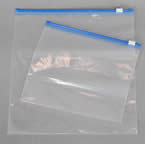 |
Pack a several ZipLoc bags of varying sizes. They have a million uses when cruising. ZipLoc bags have to be the most useful item you can pack. Want to keep things dry while at the pool? Put it in a Ziploc. Want to keep dirty clothes separate from clean ones? Put them in a Ziploc. Have a bunch of small baubles that you’re packing and would like to keep together? Or maybe you want to snag a snack for later from the buffet? Put it all in a Ziploc. Always pack a few baggies with you on your cruise and you’ll be sure to find a use for them. |
|
Bring a roadie and no not people to set up and break down your stateroom what I mean is a drinking vessel. My personal preference is a Tervis tumbler with a lid. You can take it up to the buffet and get your morning coffee or fill it with ice from your cooler and have a cold beverage. And, of course, you have your tote bag to carry it around in. All good! |
|
Handy in case of sloppiness. I can usually find these at Walgreens in the travel size section. |
|
Good to have in case your hands get grungy and there’s not water nearby |
|
Hand Sanitizer which is not a substitute for good soap and water hand washing but used in a pinch. Make certain the brand you choose is an anti-viral. |
|
Some things always with me are Nyquil/Dayquil liquid gel caps, Tums, Imodium, some kind of decongestant, an allergic cream like Benadryl, and Tylenol or the like. You can buy many of these on board if the need arises, but some raise a red flag (i.e. Imodium) and you may be sent to the ship’s doctor for examination. |
What About Prescription Medication?
What About Embarking?
What About Luggage?
Curbside porters are available at the pier during embarkation to take luggage to the vessel for delivery to your stateroom. Please be sure each piece of luggage is locked with a TSA approved lock and has the cruise line’s tag listing your name, ship and stateroom number. Curbside porters are not employees of the cruise line and it is customary to tip. Your luggage will be delivered to the door of your stateroom.
It could be several hours before your luggage arrives so use a carry bag for immediate needs and things of value or necessity such as medication. Once your luggage arrives and is unpacked store it under the bed.
If the cruise line allows you to carry on beverages, they must be in your carry-on bag.
On the last night of your cruise you'll be asked to put your luggage outside your cabin door in the late evening. There are standard jokes about the passengers who pack everything and leave the ship the next morning wrapped in a tablecloth. Be sure that you put out the clothes you plan to wear ashore the next day.
Some cruise lines offer a "carry off yourself option" to facilitate early debarkation provided you can carry off everything.
Some ports have a service that will transport your luggage to the airport. The cruise line will provide details in their daily newsletter.
Your luggage will be waiting for you in customs sorted according to colored/numbered tags. Your color/number for departing the ship will be announced, and until you are called, you'll be asked to wait in one of the public lounges. You will need to clear customs before departing the ship or leaving the pier.
Curbside porters are generally available at the pier during debarkation to take your luggage curbside or the parking garage. Curbside porters are not employees of the cruise line and it is customary to tip and many times using a port puts you in the “fast” lane for customs clearance. Claims for luggage loss or damage must be made in writing to the debarkation personnel prior to leaving the pier area. Make sure you know how many bags you have. I know this sounds basic but someone I know almost left one bag behind once. (yeah me).
What if I Am Running Late for Cruise Embarkation?
Is it Time Yet? Welcome Aboard!
How Do I Pay for Things On Board?
What Services are On Board?
What to Wear, What to Wear?
The daily program may inform you of dress requested for dinner some of which are: ELEGANT/FORMAL - you may get as dressed up as you wish; gentlemen may wear tuxedos or suits and ladies may wear long or short cocktail dresses. SEMIFORMAL - gentlemen will be requested to wear a jacket and tie, and for ladies a dress or pants suit is appropriate. CASUAL - slacks and sport shirts are appropriate for all.
Shorts, tank tops, hats and flip flops normally are not acceptable attire for dinner in the main dining room.
These guidelines are for the main dining rooms only and you will find a wide range of interpretation of these guidelines. If you prefer, you can dine, dressed as you please, in the buffet area.
During the day cruise comfort should be your guide. You should pack a light jacket or sweater as the air conditioning can make it chilly at times. If you plan to use the spa, pool or whirlpools rubber flip flops come in handy. Also think about what you will be doing in port when you pack. Hat for the sun? Comfy walking shoes? Beach cover up? Rain poncho?
There are also self-serve launderettes and laundry service on board.
How Do Meals and Dining Times Work?
Meals are included in the cost of your cruise. There are breakfasts or brunches served in the main dining room, as a buffet in a patio setting usually near the pool, or sometimes as a continental breakfast served in your stateroom. Lunch is also served as a choice between the buffet and a full course selection in the main dining room. Most ships also serve 24-hour options such as ice cream, cookies, room service or pizza. Dinner is served in the main dining room either at an assigned table and time or at time of your choosing. While options vary from cruise to cruise one thing is always the same – you will never go hungry on a cruise vacation!
Soft drinks and alcoholic beverages are not included in the price of your cruise however soda cards that you buy at the beginning of the cruise for the duration are sometimes sold as well as Adult beverage packages. If you should have special dietary needs, please inform your travel agent when you are making your reservation or see you Maître d' while onboard. Dining times are set as early (5:30ish) and late (8:00ish). Generally you will find your dining time and table number printed on your room “key” card. I recommend the late seating; you don’t want to have to rush back to the ship from a great port and there’s no shortage of food to tide you over.
If for some reason your assignment is not to your liking, ask the Maître d' for a change. If the ship is full they may not be able to change your dinnertime or your table immediately, but rest assured, he will make a note of your request and by the next day will probably be able to satisfy you. Most ships are also offering spaces for “open” dinning. You should tell your travel agent your preference at time of booking.
You also likely will have options for specialty restaurants that offer themed dining, such as seafood, steakhouses, sushi, Italian, BBQ, Brew Pubs and more. These types of restaurants charge a nominal fee for their meals.
Is There Room Service?
Where Can I Smoke?
What About Onboard Activities?
Are There Children's Programs?
Can I Shop?
Oh yeah – everywhere!
Every ship has a set of duty free shops that sell souvenirs, liquor, cigarettes, perfume and jewelry. Usually these shops have a price guarantee and offer some great bargains. Generally liquor purchased in these shops or in port is held until the end of the cruise.
Each ship will also have a shore shopping expert that will give talks regarding where to find what in the different ports and provide shopping maps and coupons. Pay attention to what currency is in use. For example, Grand Cayman sometimes prices in “Cayman Dollars” so it may not be the bargain you think. There are limits on what you can bring back duty free and these limits are governed by where you have visited. I have found that if you are over your limit by a “little bit”, while you must present yourself to the custom’s officer on debarkation day and properly declare what you have purchases, many times they will not collect money from you and instead just welcome you home
If you are shopping for liquor bargains, I always find excellent prices at the liquor store in the tender area in Grand Cayman. A plus here is they send it back to the ship for you. If you plan to stock up your bar think about bringing a luggage cart with you for ease in debarkation.
You will see pharmacies in the shops in the port area and may think it strange. However, know that some drugs and cosmetics you need a prescription for in the US can be purchased without one in the islands.What Do I Need to Know About Being Port?
Make sure you pay attention to the instructions the ship gives you regarding the documentation you need to get off the ship and re-board. Any expenses incurred in port are not included in your cruise package however you may return to the ship for all your meals. If you call on the cruise line’s private island food is usually included and drink packages can be used but rules vary so make sure you find out.
Be sure to return to the ship at least 1/2 hour before departure and keep your watch on SHIP’S time. If you use your cellphone, make sure the time does not automatically reset to local time and I actually suggest bringing a good old-fashioned wristwatch – especially if you are traveling through multiple time zones.
The ship normally does not wait for any passenger that is late returning, and it is your responsibility to make your way to the next port of call. One exception to this is if you are delayed on an excursion you booked through the ship. Normally if your group is delayed the ship will wait for you and if it cannot they will pay your expenses to get you to the next port. Check with the shore excursion desk on your ship for their exact policy.
If, God forbid, you do miss the ship the ship’s security officer will enter your stateroom and attempt to locate your passport, prescription drugs and any other items critical for an unplanned trip back to the ship. They will give these items to their port agent which is usually listed on the daily program. Make it a point to take the daily program with you when you leave the ship.
And back to the topic of shore excursions. Should you book through the cruise line or are there bargains to be had doing it yourself? My thought is if the ship will wait for you or get you to the next port at their expense, the premium they may charge is well worth it. It is a real blast standing on deck as you sail away watching people run down the pier to try and catch the ship! I will tell you, one time, and only once in many cruises, while I was aboard the Carnival Dream the Captain backed the ship up, dropped the gangway and allowed the late comers to board! Further, the tours that the ship promotes have been vetted by them so you can expect to have a quality experience and should you have an issue you have the cruise line to work with to resolve it. The last thought here is you are never guaranteed a port. If because of weather, social unrest or whatever the cruise lines deems an unsafe condition exists, ports can be skipped; cruises can be cancelled. If you have booked a private excursion will your money be refunded?
What if I Get Seasick?
Can I Phone Home?
Avoid calling home except in an emergency from the ship’s phones. The meter begins ticking after the second ring even if no one answers, and the cost is extremely high. There are cellular at sea options that are available but also pricey. Make certain you understand how your mobile phone works so it doesn’t automatically connect and you come home to a huge bill. Check with your mobile carrier before you leave to find out what is available for the places you will visit.
Alternatively you can get online. If you bring your device there are a variety of options or there are a limited number of computers in the internet café. You buy “minutes” however there is no credit for unused minutes. Some lines now offer a package rate for the entire cruise. Read the daily program to see if they have any daily specials – like “minutes happy hour” or a BOGO.
How is Tipping Handled?
How do I Pack to Leave the Ship?
What About Disembarking?
What are Some Nautical Terms?
Aft |
Near, toward, or in the rear of a ship. |
Along Side |
The ship is "parked". |
Amidships |
In or toward the middle of the ship. |
At Anchor |
The position of the ship after it has dropped anchor. |
Astern |
Behind a ship, or toward the rear of a ship. |
Beam |
Width of a ship at the widest part. |
Bearing |
Direction or position of the ship with respect to its destination. |
Berth |
The particular parking space the ship docks at the pier. Also, your cabin beds. |
Bingo |
Casino in disguise. |
Board |
To come onto a ship. |
Boat |
Boats are small. The fit on ships. Ships are big. |
Bow |
Front of the ship. |
Bridge |
Navigational, command, and control center of the ship, where the Captain works. |
Brig |
Place where unruly teenagers and their parents are held prior to their being thrown off the ship at the next port of call. |
Bulkhead |
Wall or partition separating cabins and compartments. |
Cabin |
Passenger room on a ship. |
Captain |
Master or commander of a ship. |
Chair Hog |
Scourge of the ship. Set their towels out at the crack of dawn to save a chair then show up at noon. Cruise lines try to police them but… |
Chimney |
Ship's smokestack. Note: some are fake and just for appearances. |
CHOGS |
Short for Chair HOGS. |
Crow's Nest |
High look-out point on the ship where crew can observe obstacles in the ship's path (ie. "Iceberg! Dead ahead!"). |
Dealer |
Casino employee running card games in the ship's casino. Also, someone frequently encountered in Jamaican ports, dispensing "herbal" supplements. |
Debark |
Exiting the ship, usually at the end of your cruise. |
Debarkation |
Exiting the ship, usually at the end of your cruise. |
Departure |
The time at which your ship leaves a port. |
Disembark |
Exiting the ship, usually at the end of your cruise. |
Deck |
Floor of the ship, especially the open areas. |
Deck Chair |
The chairs available on deck for passengers to lounge in. Usually saved before you get there. (See "Chair Hogs" and "CHOGS" listed above). |
Dock |
Act of parking a ship at the pier. |
Docs |
(Short for documents) Your cruise and ticket information. |
Draft |
Depth of water a ship draws (how far down into the water the ship's hull reaches), especially when loaded. (Also, beer dispensed from a tap). |
Draught |
Depth of water a ship draws, especially when loaded. |
Eastern Caribbean |
Usually includes any of the following: Nassau, Freeport, Hispaniola , Puerto Rico , St. Thomas , St. Martin , Dominican Republic , Tortola , Virgin Islands , and Puerto Rico . |
Elevator |
Mechanical device for conveying passengers from one deck to another. Generally located on any deck EXCEPT for the one you are on. It is suggested that one acquaint oneself with the stairs, which are said to help combat Ocean Air Shrinkage if employed on a regular basis. Also called a Lift. |
Embark |
To board a ship, especially at the start of your cruise. |
Embarkation |
To board a ship, especially at the start of your cruise. |
Excursion |
A side-trip, on land or sea, at your ports of call. |
Fathom |
A measure of water depth equal to six feet. |
Fore |
The forward mast or front of the ship. (Also: Be sure to duck quickly if you hear this on the recreational deck). |
Forward |
Toward the front of the ship. |
Galley |
Kitchen. Palatable edibles are prepared in mass quantities here. |
Gangplank |
Ramp running from the pier into the side of a ship by which passengers board. |
Gangway |
Opening in the side of a ship through which it is boarded or provisioned. (Also, what you hear when the buffet first opens). |
Guarantee Cabin |
A reserved cabin, usually priced at a slight discount, guaranteed by the cruise ship to be at or better than the category you actually paid for. You do not get to choose your specific cabin or location. |
Gross Tonnage |
The total enclosed revenue-earning space of a ship. 100 cubic feet equals one gross ton. |
Hawseholes |
The opening from which the ship's anchor chain extends, or a hole in the front of the ship through which a cable passes. |
Heading |
The direction in which the ship is traveling, usually in terms of a compass (N-S-E-W or 0-360 degrees). |
Hold |
Place where the uncooked palatable edibles are stored. (Also, what you should do with an "18" in BlackJack). |
Hull |
The ships outer shell. Excludes anything built above the main deck. |
Interior Cabin |
A cabin inside the ship with no view. |
Keel |
Primary structural member of the ship that extends longitudinally along the center of its bottom from the front to the back. |
Kids Club |
Programming provided for children, generally consisting of games, arts-and-crafts, and various supervised activities. |
Knot |
One nautical mile per hour. (One knot is about 15% faster than one mile per hour). |
Larboard |
The left side of the ship, also known as "port". |
Leeward |
The side of the ship opposite from the side from which the wind is blowing. |
Length |
The distance from the extreme front of the ship to the extreme rear of the ship. |
List |
The degree of tilt of the ship to one side or the other. |
Maître d' |
Person who shows diners to their tables and supervises the waiters in a dining room. |
Midships |
In or toward the middle of the ship. |
Muster |
Where the latest in cruise fashions and sudden disembarkations are discussed. |
Nautical Mile |
6,080.2 feet. Slightly more than 1.15 land miles. |
Occupancy |
The number of paying passengers a ship can carry. Does not include 3rd and 4th passengers occupying fold-away beds in an otherwise 2-person cabin. If these are totally occupied, a ship can claim to be over 100% capacity. |
Ocean Air Shrinkage (OAS) |
Atmospheric condition at sea which causes all your clothing to lose one or two sizes between the start and end of the cruise. The longer the cruise, the more OAS will occur. Consider bringing elastic-waisted clothing to counteract OAS. |
Ocean View Cabin |
At the very least, you have a porthole with a partial view of the water. At best, you have large windows. |
Pilot |
Local from shore who is responsible for bringing the ship into and out of your Port of Call. |
Pitch |
The rise and fall of the front of the ship while at sea. |
Port |
The left side the ship. Easy to remember because PORT and LEFT each have 4 letters. Many times portside staterooms are even numbers. Also: short for "port of call". |
Porterage |
Porters or workers who take your luggage from point A to point B. |
Porthole |
A small, usually round, window. |
Port of Call |
A destination that your ship stops at on your voyage. |
Private Balcony |
A balcony that is attached to your cabin. Does not mean it is covered or secured from the gaze of others. |
Promenade |
Public area of ship with shops, bars and restaurants. |
Prow |
The front of the ship. |
Purser/Customer Service Manager |
Official on a ship responsible for papers and accounts and also for the welfare of passengers. |
Registry |
Country in which the ship is registered. |
Roll |
The side-to-side sway of a ship while at sea. |
Onboard Credit (OBC) |
Monies credited to your onboard charge account, generally as an incentive for booking a cruise or as compensation for a missed port or unsatisfactory situation. |
Southern Caribbean |
Usually includes any of the following: Aruba , St. Lucia , Antigua , Grenada , Curacao , and Barbados . Can also include some Eastern Caribbean ports. |
Stabilizer |
Hydraulic activated underwater fins to minimize ship's roll. |
Stack |
Ship's smokestack. |
Stampede |
Resulting action which occurs when the doors to the dining room or showroom open. |
Starboard |
The right-hand side of the ship. STARBOARD and RIGHT HAND have the nine letters. Many times starboard staterooms have odd numbers. |
Stateroom |
Fancy name for a cabin. |
Steerage |
Cabins below the water line. |
Stem |
The absolute front point of the ship. |
Stern |
The absolute rear point of the ship. |
Steward |
Person who services a cabin. May have an assistant. Has a way of mysteriously keeping your room cleaned without ever being seen. |
Suite |
A larger cabin, usually available at a disproportionately higher fare. |
Superstructure |
The parts of the ship that are above the main deck. |
Tender |
The smaller ship, boat, or lifeboat used to transfer passengers from the ship to the shore and back again when the ship is anchored offshore. |
Tender Tickets |
A priority system used to determine when passengers may exit a ship via a tender. |
Travel Insurance |
Insurance that pays for a variety of conditions which interrupt your voyage. |
Veranda |
A private or semi-private balcony for the exclusive use by passengers occupying a cabin. |
Wake |
Track or waves left behind a ship as it moves through the water. |
Waterline |
Point on the outside of a ship to which the water rises. Also: a line marked on the outside of a ship that corresponds with the water's surface when the ship is afloat under specified conditions. |
Weigh Anchor |
To raise the anchor. |
Western Caribbean |
Usually includes any of the following: Nassau, Grand Cayman, Jamaica, and continental Latin American countries of Mexico, Honduras, Belize, Costa Rica, and Panama. |
Windward |
The side of the ship that the wind is blowing into. |


